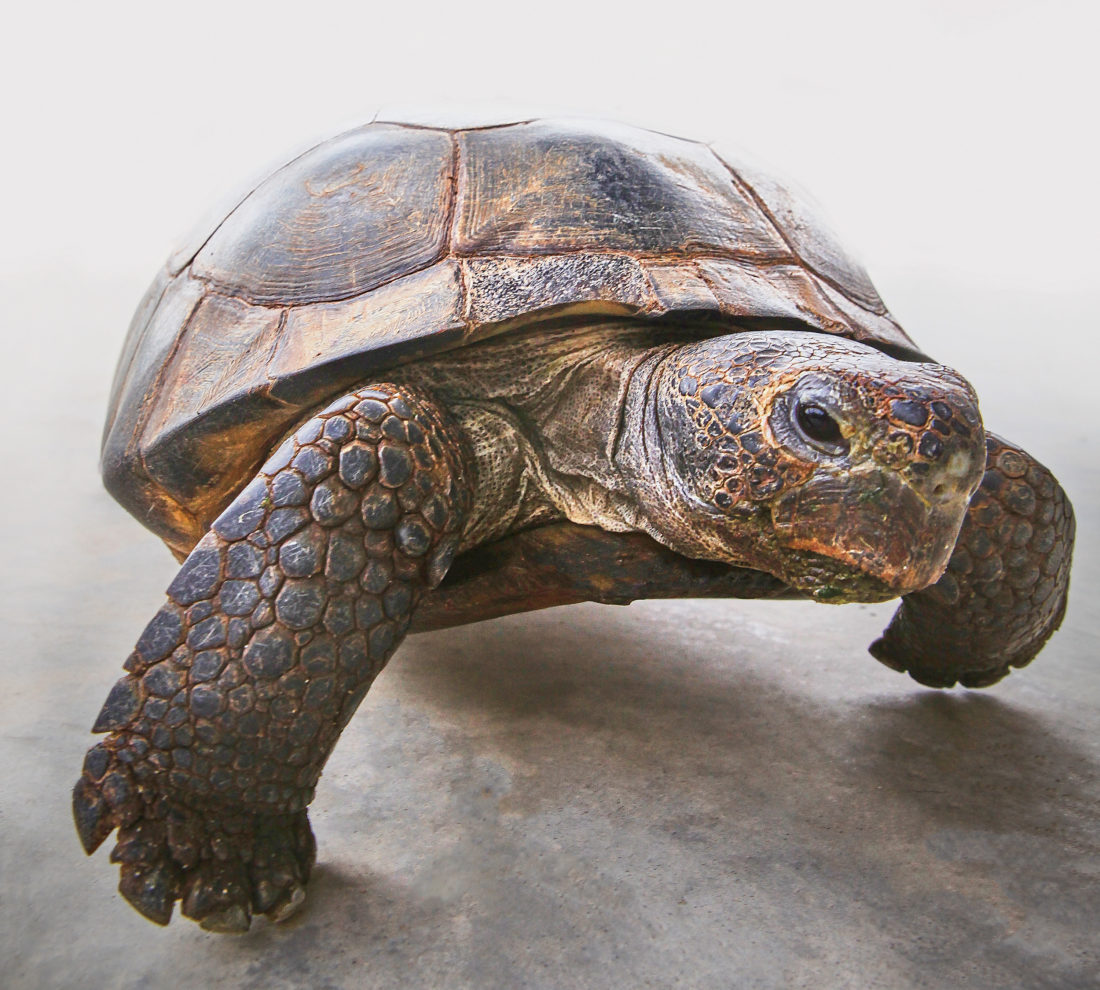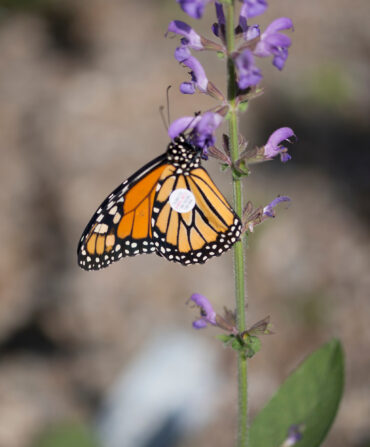When the fires burn hot, the ground temperatures in a longleaf pine blaze can reach five hundred degrees. The soaring thick-barked pines have evolved to thrive in such an inferno, but not many other trees can take the heat. Maples and sweet gums burn to coals. Oaks char and wither.
Deep underground, however, the only land tortoise found east of the Mississippi River keeps its cool. Gopher tortoises survive the South’s frequent fires—prescribed or otherwise—and simmering summer heat by retreating to the extensive burrows they dig in sandy soil up to ten feet deep and twenty-five feet long. In turn, those dens create a kind of condo living environment that benefits nearly four hundred species. Eastern diamondback rattlesnakes frequent the tunnels, as do Florida scrub lizards. The federally threatened Eastern indigo snake uses the burrows for breeding, egg laying, and fire escape. The Florida mouse and gopher frog, both rare species, live there, too, along with a perhaps unappreciated community of subterranean crickets, ticks, flies, and dung beetles.
The gopher tortoise ranks as one of the most important animals in the longleaf ecosystem, contends Dr. Christopher Jenkins, CEO of the Georgia-based Orianne Society, a reptile and amphibian conservation group. “It’s a true keystone species,” he says—protecting the gopher tortoise aids hundreds of other species as well. Habitat restoration methods, including controlled burns, even benefit other iconic Southern creatures, from the wild turkeys that feed and nest in fresh stands of wire grass and bluestem in the weeks and months after a fire—a crucial food supply for the tortoises as well—to the bobwhite quail chicks that easily move through newly thinned underbrush, chasing protein-rich insects.
The tortoise, though, could especially use a hand now. Fire suppression, development, and road building in its range have decimated populations. The animals, which can weigh up to fifteen pounds, are listed as a threatened species by the federal government in western Alabama, Louisiana, and Mississippi, and by the state in Georgia and Florida; South Carolina lists them as endangered.
Thankfully, taking care of the gopher tortoise is gaining traction in the South, particularly in Georgia, where it traditionally enjoys a large presence and range. There, a five-year $150 million public-private endeavor to keep the state’s population off the federal endangered species list is already largely financed. Georgia’s Gopher Tortoise Conservation Initiative aims to protect a minimum of one hundred thousand acres for gopher tortoises and sixty-five “viable populations,” each of which would include at least 250 adults, and has attracted a wide array of partners. In addition to conservation groups such as the Orianne Society, the Nature Conservancy, the Georgia Conservancy, and the Conservation Fund, and the nonprofit Bobolink Society and Knobloch Family Foundation, the group is joined by the U.S.
Fish and Wildlife Service, the U.S. Department of Defense, and the Georgia Chamber of Commerce, among others. “I’ve been in the natural resources field for twenty years,” says Steve Friedman of the Georgia Department of Natural Resources, “and I’ve never seen such a concerted effort.”
By collaborating, the group hopes to keep the tortoise from being listed federally as “threatened” in Georgia under the Endangered Species Act, leaving the partners more wiggle room to come up with solutions on their own. Even the Department of Defense has a vested interest in avoiding the gopher tortoise’s further demise. To manage, for instance, the federally endangered red-cockaded woodpecker—another species that helps create habitats for longleaf denizens and thrives on military lands across the Southeast—it spent more than $200 million between 1991 and 2016.
“Despite the different agendas, there was a common goal to make sure we could maintain viable populations of this interesting little fellow,” says Reese Thompson, who is partnering with the initiative to improve habitats on hundreds of acres of his family’s property near Vidalia, which holds stands of hundred-year-old longleaf pine. “We’ve got to be able to make a living off the land, but be good stewards of the land.”
And while tortoise projects such as controlled burns and longleaf restoration often occur on private lands such as Thompson’s, a cornerstone of the effort is to maximize the amount of land the public can access. Already, the initiative has purchased and turned over to the state of Georgia properties that comprise two new wildlife management areas open to hunting, fishing, birding, and other outdoor recreation, and plans are under way to permanently preserve nearly twenty thousand additional acres under state ownership.
Of course, the biggest feat will be simply to allow a creature that has lived through a few million years of cyclical fire the chance to crawl out of the ground to munch on mouthfuls of native little bluestem, gopher apple, and goat’s rue. “Watching a gopher tortoise move and forage is a thing of beauty,” says Dirk Stevenson, director of the Orianne Society’s Longleaf Savannas Initiative. “There’s something primitive and endearing about the pace of its existence.” One that now stands a much better chance of persisting.








